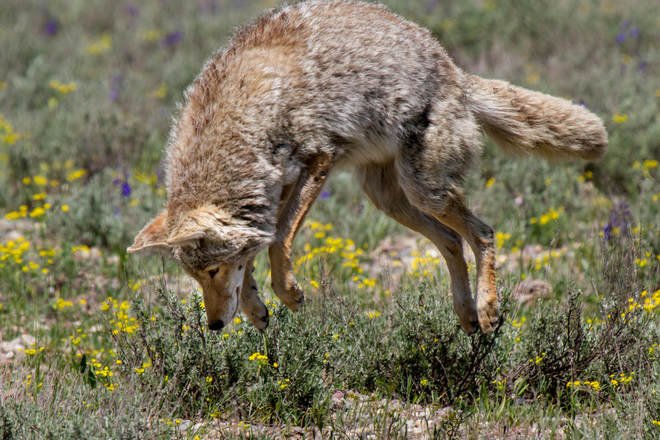
Canid Ecology
Learn about the history of coyotes, how they live, and how to identify coyotes.
About Coyotes
-
Coyotes have been in DC and the metro area for almost 20 years. Once limited to the western part of the US, they have naturally expanded their range over time and now live in 49 states and DC. Coyotes can also now be found in parts of Latin America and Canada, and seem to be expanding their range further south. Coyotes have been able to move across the country for a few reasons. In addition to being fairly tolerant of humans, coyotes can adapt to landscapes that people have altered through urbanization, deforestation, and agricultural expansion. Humans have also eradicated or suppressed larger predators, including wolves and mountain lions, leaving coyotes as the apex or top predator throughout much of their range. With less competition for resources and humans posing the only major threat, coyote populations have grown in recent years.
-
Coyotes are social and territorial animals. They live in groups ranging from a monogamous bonded pair to packs with adult pups from previous years that help raise the current year’s pups. Some coyotes are transient – they haven’t settled down with a mate yet. These animals move around an area trying to find an unoccupied territory and avoid mated coyotes who hold and guard a territory. Coyotes often have small territories in urban areas where resources are abundant, and occupy larger territories in rural areas.
Coyotes are naturally active during the day, as their eyes are better adapted to seeing in the daylight than the darkness at night. However, coyotes are very adaptable, and in many places, they are more active from dusk to dawn to better avoid humans.
Coyotes mate in the winter and pups are born in the spring. During the summer months, parents move their pups out of the protection of the den to so-called "rendezvous" sites, where there is vegetative cover but not as much security as the den offers. In the fall, some pups disperse from their family in search of new territories and mates of their own.
-
Coyotes are opportunistic eaters and will eat a wide variety of foods, including fruits and other vegetation, insects, small birds and eggs, rodents, and in some cases, larger mammals such as deer.
Coyotes often scavenge animals that have died in other ways and can be found eating road-kill and carcasses abandoned by hunters. Urban areas tend to have an abundance of food for coyotes (think rodents and rabbits, for starters!), which is one of the reasons they do so well living in close proximity to people.
They can also take advantage of anthropogenic (human-produced) food sources, such as pet food that has been left outside or scraps in unsecured compost bins. Luckily, there are a number of steps we can take to lower the risk of human-coyote conflict.
-

Coyote or Fox?
Learn to tell the difference between a coyote and our two local fox species.
-

Eastern Coyotes
Coyotes found in the DC metro area differ from coyotes in the western part of the country.
